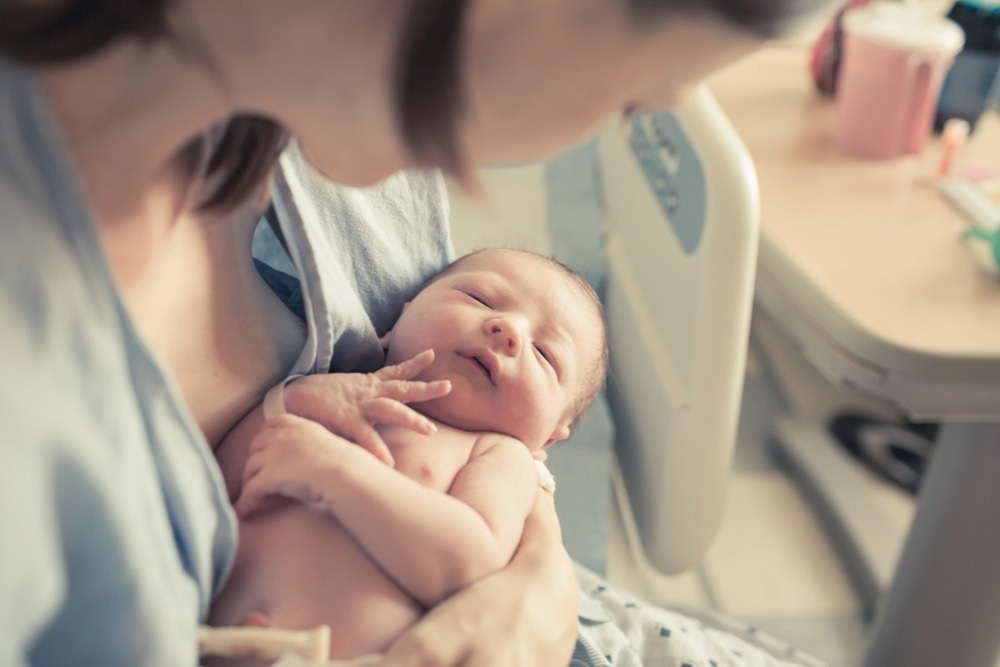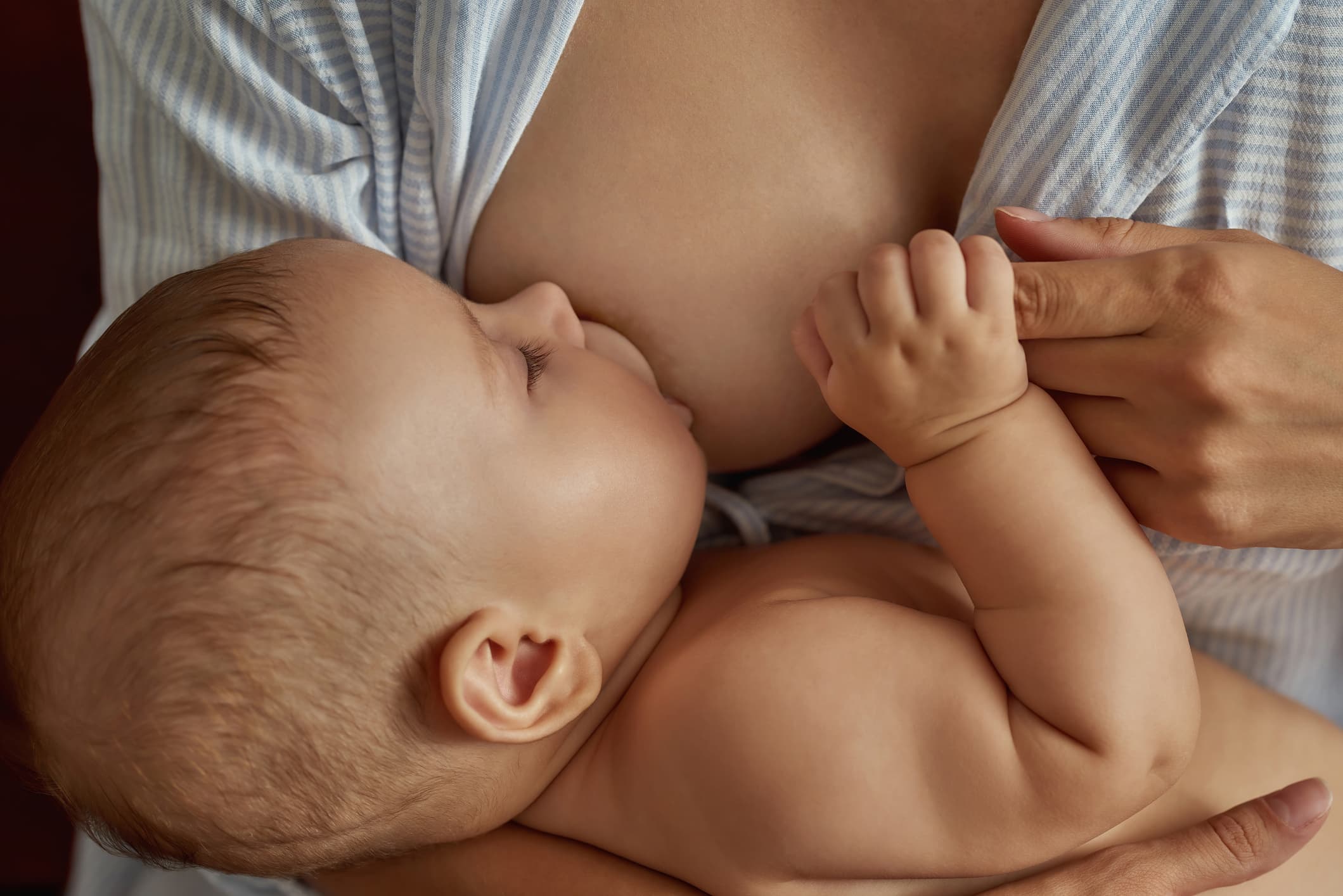Although the severe acute respiratory syndrome coronavirus 2 (SARS-CoV-2), the causal agent of the coronavirus disease 2019 (COVID-19) pandemic, predominantly infects adults, many children and infants can contract the mild or asymptomatic infection. Nevertheless, severe infection and mortality rates associated with COVID-19 are low among children.

Study: Systems biological assessment of the temporal dynamics of immunity to a viral infection in the first weeks and months of life. Image Credit: KieferPix / Shutterstock.com
Background
Compared to adults, infants, and young children possess different immune systems, both in their composition and function. The immune systems of children and infants mature significantly in the initial weeks and months of life. Although many studies have explored this maturation process in healthy infants, longitudinal analyses of the immune response to an infection in infants are rare.
Similarly, few studies have evaluated how an immature immune system responds to COVID-19 during the first weeks and months of life. There also remains a lack of research on the activation of the innate immune response in infants when they develop a mild infection.
Thus, the extent to which infants develop durable antibody responses, as well as T- and B-cell memory, to SARS-CoV-2 needs to be investigated. It is equally important to understand how COVID-19 impacts the maturing of infants’ immune systems in the long term.
About the study
To this end, using a multi-omics approach, a recent study posted to the medRxiv* preprint server assesses immune responses to SARS-CoV-2 shortly after birth.
A total of 125 samples were obtained from 54 infants infected with SARS-CoV-2 and 27 healthy infants. The subjects were participants of the IMPRINT cohort at the Cincinnati Children’s Hospital Medical Center, consisting of infants and young children tested weekly for COVID-19.
A total of 32 participants were infected with pre-Omicron variants, while 22 were infected with Omicron variants. Samples were collected longitudinally, and the median age of the infected infant was nine months.
Blood samples were also obtained from 48 adult COVID-19 patients and ten healthy (control) adults, whose average age was around 59 years.
Study findings
Although previous studies on SARS-CoV-2 infection in adults revealed a waning of antibody responses in approximately 120 days, the current study observed robust and durable antibody responses generated against SARS-CoV-2.
To date, the mechanism responsible for developing durable antibody titers in infants is unknown. Nevertheless, this information could support developing novel vaccines that provide long-term protection.
It is highly likely that the bone marrow of infants, which has less antigenic exposure than adults, generates a significant number of supportive niches to support long-term plasma cell survival.
The experimental results of the current study also revealed that infants are vulnerable to new SARS-CoV-2 variants of concern. This finding was based on reduced serum neutralization titers in infants and young children infected with Omicron sublineages, such as BA.1, BA.2, BA.3, and BA.4/5, as well as the Delta variant.
Limited duration and magnitude of memory B-cell responses were observed in infected infants. Furthermore, reduced memory T-cell responses were found in infants compared to adults.
Regarding autoantibodies, elevated antibody levels were observed against multiple autoantigens, such as autoimmune overlap syndromes (MI-2, Jo1), myositis (SRP54), and scleroderma. However, compared to healthy controls, the serum of COVID-19-infected infants and young children did not reveal enhanced anti-interferon ⍺ (IFN⍺) autoantibodies.
Based on experimental results, it was suggested that an increase in autoantibodies after birth could be a commonly occurring event associated with the development of the infant’s immune system, potentially caused by exposure to other infections. However, in the initial months after birth, infants also exhibit maternal immunoglobulins that were transferred to them before birth through the placenta.
A non-canonical state of inflammation characterized by the upregulation of activated markers on blood innate cells was observed. In addition, a unique plasma cytokine profile without inflammatory cytokines was found in infants. A transient accumulation of chemokines and type I IFN was also observed.
Plasma samples from infants and young children exhibited high levels of IFN⍺2, CXC motif chemokine ligand 10 (CXCL10), interleukin 8 (IL-8), and IL−18R1. Single-cell multi-omics and cytometry by time of flight (CyTOF) analysis indicated rapid activation of innate immune cells, which was determined based on the increased levels of activation markers including cluster of differentiation 38 (CD38), and human leukocyte antigen DR isotype (HLA-DR), as well as phosphorylated STAT1.
Conclusions
One of the limitations of the current study is the inclusion of adult samples associated with mild, moderate, and severe SARS-CoV-2 infection, whereas the majority of infants who were included only exhibited mild symptoms.
Nevertheless, as compared to mildly infected adult data, infants exhibited a reduced inflammatory plasma cytokine profile. The epigenetic imprints in the infant immune system were relatively short-lived and more heterogeneous as compared to adults.
Taken together, the current study provides novel insights into the perturbations triggered by a pathogen in the relatively immature immune system of infants.
*Important notice
medRxiv publishes preliminary scientific reports that are not peer-reviewed and, therefore, should not be regarded as conclusive, guide clinical practice/health-related behavior, or treated as established information.

 PARENTING TIPS
PARENTING TIPS PREGNANCY
PREGNANCY BABY CARE
BABY CARE TODDLERS
TODDLERS TEENS
TEENS HEALTH CARE
HEALTH CARE ACTIVITIES & CRAFTS
ACTIVITIES & CRAFTS

